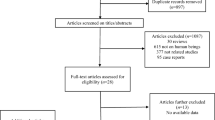Abstract
In Phase I clinical studies, the maximum tolerated dose has to be determined by a case by case analysis sometimes using a laboratory adverse effect, e.g. an increase in alanine amino transferase (ALT). For this reason a threshold to discriminate between significant or non significant adverse changes in ALT is required particularly in Phase I studies, in order to deal with the very common “close to the limit values”. Previous methods (limit of normal range or normal range plus an arbitrary margin) do not solve this problem. The authors propose a new method taking into account the threshold used as inclusion criteria for ALT (R) and the range of spontaneous variations measured under identical Phase I study conditions (V). The (R) and (V) thresholds, respectively, are defined as 50 IU·1−1 and a 50% increase, from baseline. Thus an ALT value is recognized as a “significant adverse experience” if it exceeds 50 IU·1−1 above an increase from baseline exceeding 50% of the baseline value.
To highlight the value of the method, it was implemented in a one year period including 8 studies and 134 subjects. The sensitivity, specificity and positive predictive value of various methods were compared.
The results showed the following: Six out of 134 subjects had significant adverse changes in ALT (4%); and all these 6 subjects were detected by the proposed new method without error. Eight subjects including two false positives, were detected by an use of the normal range limit, and only 4 were detected using, the 10% margin. Thus, use of the new method showed 1. keeping the normal range limit as the detection threshold led to preserved sensitivity; 2. it reduced the background noise of false positive results related to chance variation around the upper limit, mainly in subjects with a baseline value close to the limit; 3. it allowed better judgment of the significance of a value which lay just beyond the limit when variation from the baseline exceeding the normal range. The new method produced the best combination of sensitivity, specificity and positive predictive value. Given the small number of subjects in the study, further evaluation with a larger population is required.
Finally, the proposed new method seems to be a tool easy to use determining the significance of adverse changes in ALT when the values are close to the limit that is common in Phase I studies.
Similar content being viewed by others
References
Vital Durand D, Sibille M (1993) Interprétation d'une hypertransaminasémic modérée. In: Rousset H (ed) Diagnostics difficiles en médecine interne, vol 4. Maloine, Paris, pp 103–109
Sibille M (1990) Methods in Phase I. Healthy volunteers selection for Phase I studies. Fundam Clin Pharmacol 4: 167s-176s
Sibille M, Vital Durand D (1990) Laboratory screening method for selection of healthy volunteers. Eur J Clin Pharmacol 39: 475–479
Bergmeyer HU, Horder M, Rej J (1986) Analytical section expert panel on enzymes. Approved recommendation on IFCC methods for the measurement of catalytic concentration of enzymes. 3. IFCC method for alanine aminotransferase. Ann Biol Clin 44: 321
Fraser CG (1989) The application of theoretical goals based on biological variation in proficiency testing. Arch Path Lab Med 112: 404–415
Fraser CG, Forgarty Y (1989) Interpreting laboratory results: analytical and biological variation must be taken into account. Br Med J 298: 1659–1660
Fraser CG, Harris EK (1989) Generation and application of data on biological variation in clinical chemistry. Crit Rev Clin Lab Sci 27: 409–437
Fraser CG, Hyltoft Petersen P (1991) The importance of imprecision. Ann Clin Biochem 28: 207–211
Siest G, Henny J, Schiele F (1990) Alanine amino transferase. In: Siest G (ed) Références en biologie clinique. Elsevier, Amsterdam Paris, pp 77–92
Priest JB, Oei To, Moorehead WR (1992) Exercise-induced changes in common laboratory tests. Am J Clin Path 77: 285–289
Porikos KP, Van Itallie TB (1983) Diet-induced changes in serum transaminase and triglyceride levels in healthy adult men. Role of sucrose and excess calories. Am J Med 75: 624–629
Garry PJ, Hunt WC, Vanderjagt DJ, Rhyne RL (1989) Clinical chemistry reference intervals for healthy elderly subjects. Am J Clin Nutr 50: 1219–1230
Author information
Authors and Affiliations
Rights and permissions
About this article
Cite this article
Sibille, M., Boutouyrie, B., Lassonery, L.G. et al. Upper limit of plasma alanine amino transferase during Phase I studies. Eur J Clin Pharmacol 47, 417–421 (1995). https://doi.org/10.1007/BF00196855
Received:
Accepted:
Issue Date:
DOI: https://doi.org/10.1007/BF00196855




